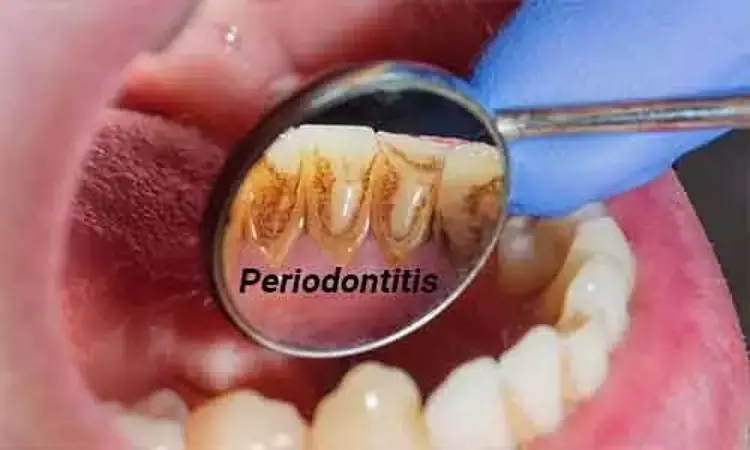- Home
- Medical news & Guidelines
- Anesthesiology
- Cardiology and CTVS
- Critical Care
- Dentistry
- Dermatology
- Diabetes and Endocrinology
- ENT
- Gastroenterology
- Medicine
- Nephrology
- Neurology
- Obstretics-Gynaecology
- Oncology
- Ophthalmology
- Orthopaedics
- Pediatrics-Neonatology
- Psychiatry
- Pulmonology
- Radiology
- Surgery
- Urology
- Laboratory Medicine
- Diet
- Nursing
- Paramedical
- Physiotherapy
- Health news
- Fact Check
- Bone Health Fact Check
- Brain Health Fact Check
- Cancer Related Fact Check
- Child Care Fact Check
- Dental and oral health fact check
- Diabetes and metabolic health fact check
- Diet and Nutrition Fact Check
- Eye and ENT Care Fact Check
- Fitness fact check
- Gut health fact check
- Heart health fact check
- Kidney health fact check
- Medical education fact check
- Men's health fact check
- Respiratory fact check
- Skin and hair care fact check
- Vaccine and Immunization fact check
- Women's health fact check
- AYUSH
- State News
- Andaman and Nicobar Islands
- Andhra Pradesh
- Arunachal Pradesh
- Assam
- Bihar
- Chandigarh
- Chattisgarh
- Dadra and Nagar Haveli
- Daman and Diu
- Delhi
- Goa
- Gujarat
- Haryana
- Himachal Pradesh
- Jammu & Kashmir
- Jharkhand
- Karnataka
- Kerala
- Ladakh
- Lakshadweep
- Madhya Pradesh
- Maharashtra
- Manipur
- Meghalaya
- Mizoram
- Nagaland
- Odisha
- Puducherry
- Punjab
- Rajasthan
- Sikkim
- Tamil Nadu
- Telangana
- Tripura
- Uttar Pradesh
- Uttrakhand
- West Bengal
- Medical Education
- Industry
Periodontitis parameters help estimate periodontitis-related tooth loss

The reasons for tooth extraction are rarely recorded in epidemiological datasets. It poses a diagnostic challenge to determine if tooth loss is related to periodontal disease (TLPD).
Periodontally compromised teeth adjacent to a lost tooth may help estimate whether the loss could be related to periodontal disease when the actual extraction reasons are unknown, suggests a recent study published in the Journal of Dentistry.
An Li and colleagues from the Center for Dentistry and Oral Hygiene, University Medical Center Groningen, University of Groningen, Groningen, the Netherlands aimed to assess the inter-tooth relationships based on the periodontal characteristics of existing teeth.
A cross-sectional dataset of 8,978 participants with complete periodontal examination (including probing pocket depth [PPD] and clinical attachment loss [CAL]) was used in this study. Spearman rank correlation was applied to assess the inter-tooth correlations of probing pocket depth/ clinical attachment loss among 28 teeth after adjustment for relevant confounders.
The authors further verified the findings in the Java Project on Periodontal Disease with tooth loss is related to periodontal disease information available (the number of tooth loss is related to periodontal disease = 12).
The results showed that strong probing pocket depth/ clinical attachment loss correlations were observed in adjacent teeth rather than those on non-adjacent teeth.
The correlations increased among severe periodontitis cases. In line with this, they further observed that the teeth adjacent to the tooth loss is related to periodontal disease tooth had the most alveolar bone loss in the Java dataset.
Therefore, it was concluded that the periodontitis parameters (PPD/CAL) of adjacent teeth could be a potential indicator to estimate tooth loss is related to periodontal disease when actual reasons for tooth extraction are unknown.
Periodontally compromised teeth adjacent to a lost tooth may help estimate whether the loss could be related to periodontal disease when the actual extraction reasons are unknown, they further inferred.
Dr. Nandita Mohan is a practicing pediatric dentist with more than 5 years of clinical work experience. Along with this, she is equally interested in keeping herself up to date about the latest developments in the field of medicine and dentistry which is the driving force for her to be in association with Medical Dialogues. She also has her name attached with many publications; both national and international. She has pursued her BDS from Rajiv Gandhi University of Health Sciences, Bangalore and later went to enter her dream specialty (MDS) in the Department of Pedodontics and Preventive Dentistry from Pt. B.D. Sharma University of Health Sciences. Through all the years of experience, her core interest in learning something new has never stopped. She can be contacted at editorial@medicaldialogues.in. Contact no. 011-43720751
Dr Kamal Kant Kohli-MBBS, DTCD- a chest specialist with more than 30 years of practice and a flair for writing clinical articles, Dr Kamal Kant Kohli joined Medical Dialogues as a Chief Editor of Medical News. Besides writing articles, as an editor, he proofreads and verifies all the medical content published on Medical Dialogues including those coming from journals, studies,medical conferences,guidelines etc. Email: drkohli@medicaldialogues.in. Contact no. 011-43720751


